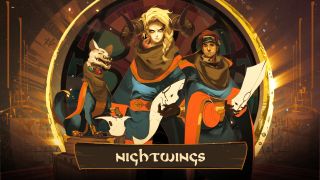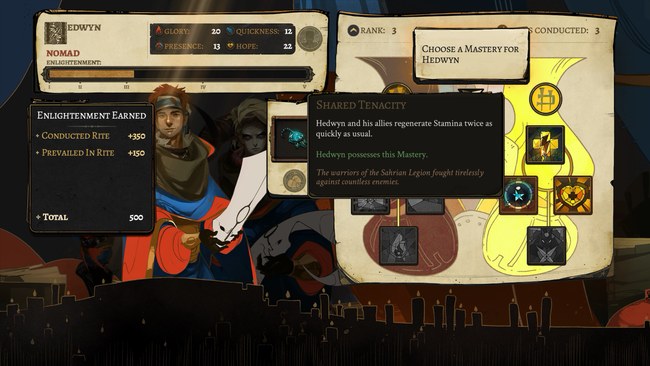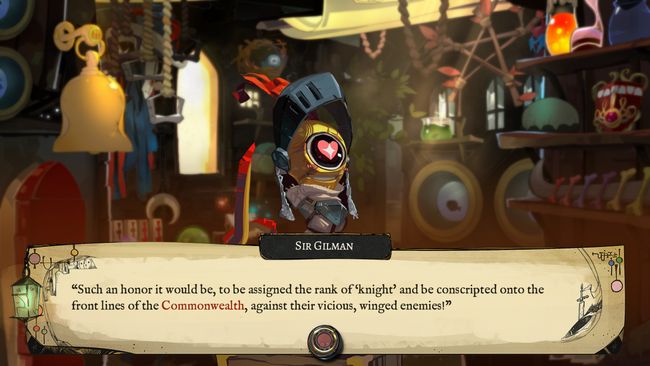vortex
Fabulous Optimist
http://indiegames.com/2016/11/pyre.html
Supergiant Games' first two games, Bastion and Transistor, are isometric action games. They have very different settings and Transistor improved on the combat of Bastion, but the mechanical similarities were obvious. However, their upcoming game Pyre, due out sometime next year, is set to be an RPG revolving around a sports-like 3v3 ritual. At the heart of that strange leap is a desire to craft a story about a larger cast of characters and dealing with failure.
According to Greg Kasavin of Supergiant Games, the team enjoyed crafting the worlds of Bastion and Transistor, but realized that both games have very few characters in them. "This time around, we got excited by the idea of the player getting close to an interesting cast of characters over the course of a grand journey, and having some impact over what happened to them," he says.
"We wanted the stakes of the story to be high, but not the kind of life-or-death struggle that's there in a lot of games, so that these characters would have to recover from their losses and the game and story could move forward even if the player failed in a given moment. That way the experience could feel more true-to-life, and more about how relationships between people really are, despite the trappings of Pyre's fantasy setting."
The game casts the player as someone who has just been exiled to a barren land from which there is supposed to be no escape. They quickly get picked up by folks who say that there is a way -- but that they need someone who can read to guide them. Since it turns out that the player's avatar was exiled for reading, they're in luck. The player can guide them to be in the right places at the right times so that they can participate in rituals and work their way out of the wastelands.
Those rituals take the form of a 3v3 match against another group whose ultimate goal is the same as that of the player and their companions. They're designed to stress the fact that the player character and their companions cannot succeed without each other's help.
"We were very interested in capturing the feel of a high-stakes battle of wits, where you have to outsmart and outmaneuver your opponent to succeed," says Kasavin. "At the same time, we knew we were making a multi-character game, but not a team-based game. So, the player's role would be to guide these other characters to victory, against other characters equally motivated to succeed.
"Analogies to sports or competitions became very intriguing for a variety of reasons," he continues. "Such competitions can stress both teamwork and personal achievement while sometimes putting those things in conflict. Competitions have their own complex rules that need to be learned and accepted but can at times be subverted. And those who fail competitions typically have to confront their failure, and figure out how to move on from it."
Since dealing with failure is one of the big themes of the story, Pyre has no 'game over' state. Win or lose, the characters continue on. One way or another their story will end. This means the story has to branch, and that's made more work for Kasavin. "We have this goal of creating a game where your actions can influence what happens to the characters around you, so aspects of the story have to branch in order for that to be possible," he says. "I spend a lot of time writing variant versions of events that a given player will never see!"
"Our goal with our stories has always been to balance having personal moments and details unique to the player's own experience with the benefits of having an authored story and characters," says Kasavin. "We've explored a wide range of possibilities for both the use of procedurally-generated content and branching story content and think we've found the appropriate proportions for the game we're making."
One big development challenge that Kasavin mentions is figuring out what place narrative and dialog would have in the game. "We knew it would have one! The act of reading is important in the world of this game. But figuring out the answer to 'how much reading should there be' took a lot of iteration to figure out," he says. "The stories of our games are there in service of the experience, so we're sensitive to using story as efficiently and economically as possible, and ruthless about starting over on stuff that isn't quite there."
Supergiant's focus on crafting narratives that players can get involved in is probably why Kasavin is reluctant to go into further details on how the lack of a 'game over' state will impact the story and its branching narrative. "On the face of it you'd think [the lack of a 'game over' state] would make for an extraordinarily easy game, though on the contrary I think our game has plenty of challenge in a variety of ways," he says. "As game players many of us are highly conditioned to save-load out of our failures. But I hope that many players will eventually experience this aspect of Pyre for what it is, and take something positive away from it."






![The Year of Incline [2014] Codex 2014](/forums/smiles/campaign_tags/campaign_incline2014.png)

![Glory to Codexia! [2012] Codex 2012](/forums/smiles/campaign_tags/campaign_slushfund2012.png)

































